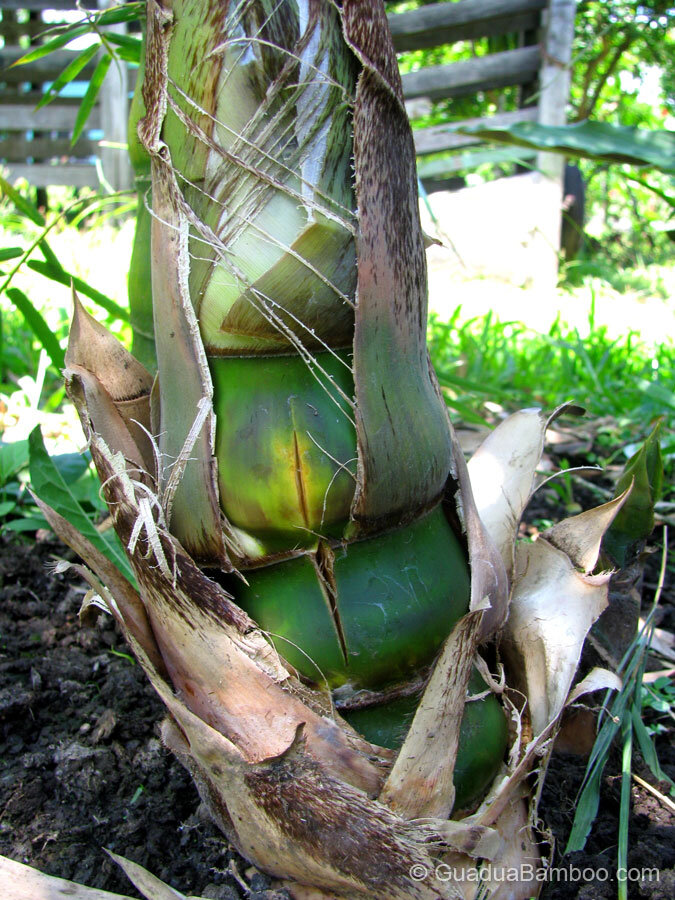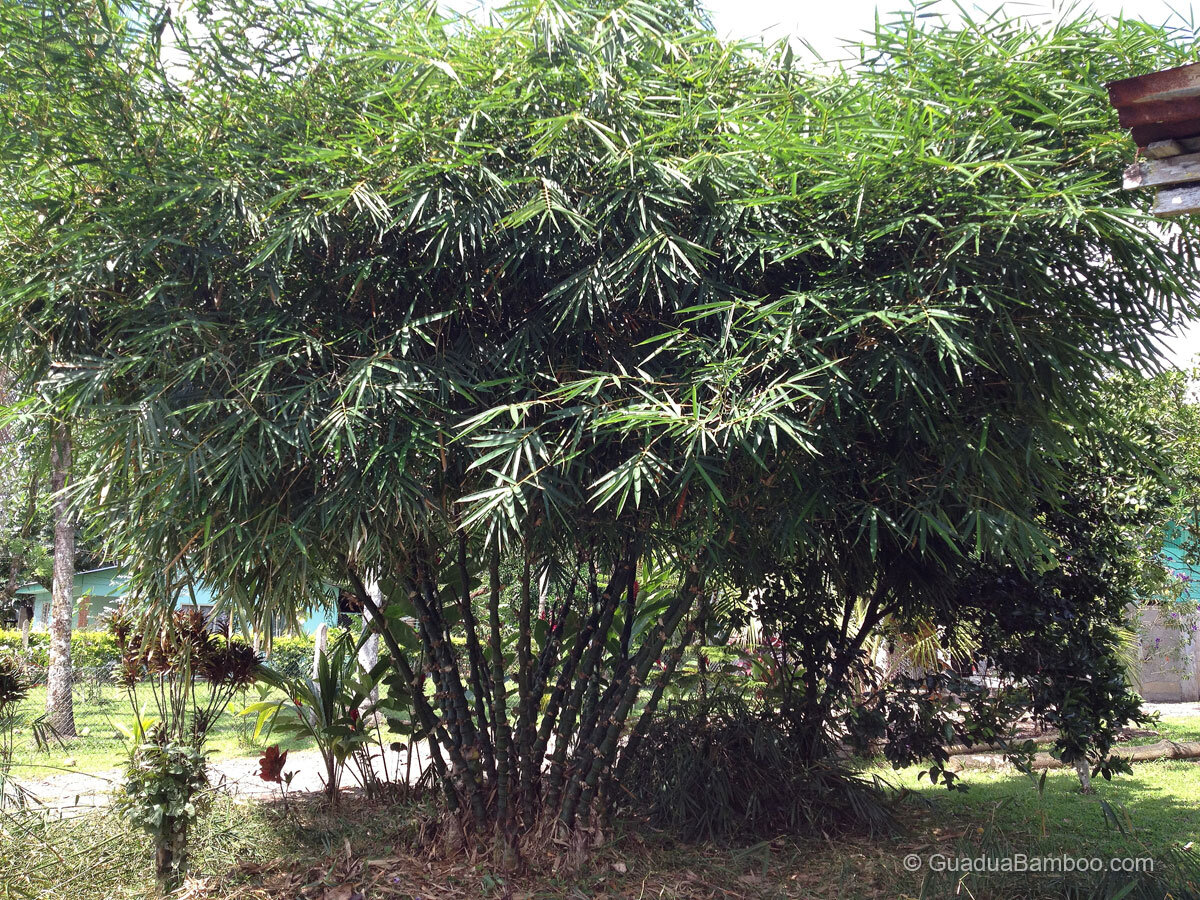Bambusa vulgaris 'Wamin'
Bambusa vulgaris 'Wamin' or Dwarf Buddha Belly Bamboo is a small sized tropical clumping bamboo native to South China. It is a very attractive ornamental with swollen internodes and weeping culms. Its timber is popular for bamboo craft or ornamental pieces.
| Plant Info | |
|---|---|
| Scientific Name | Bambusa vulgaris ‘Wamin’ |
| Synonyms | Bambusa wamin |
| Common Names | Dwarf Buddha Belly Bamboo, Wamin Bamboo |
| Family | Poaceae |
| Tribe | Bambuseae |
| Genus | Bambusa |
| Height | 2-5 m |
| Diameter | 2-7 cm |
| Growth Habit | Clumping |
| Color | Dark shiny green |
| Internodes | 10-15 cm. Swollen. |
| Wall thickness | Thick |
| Branches | Several or many branches grouped with 1-3 larger branches. |
| Leaves | 15-30 cm long, 20-30 mm wide. |
| Climate | Tropical - Subtropical |
| Exposure | Full Sun - Partial Sun |
| Hardiness | -2°C |
| Soil | Loamy and alluvial soils, well drained. |
| Water Needs | Average |
| Planting Distance | • Every 2 m for screening. • 4 x 4 m for culm production. |
| Edibility | (0 of 5) |
| Flowering Cycle | Unknown |
| Origin | China |
| Uses | Interior design and crafts, indoor plant in pot or as a solitary ornamental garden plant, living fences, landscaping. |
Culms
This species is a small sized graceful bamboo. Culms are loosely tufted, dark shiny green, woody and thick-walled, with an average height between 2-5 m. Internodes are 10-15 cm long of which the lower internodes are shortened and swollen with nodal roots. Lower swollen internodes can be 10-12 cm in diameter.
Branches
Several to many clustered branches with 1-3 larger dominant branches. Branches usually occur over the enitire culm.
Leaves
The leaves of this bamboo are usually between 15-30 cm long and 2-3 cm wide.
Seeds
Data on flowering cycles and seed setting is unknown.
Habitat
Bambusa vulgaris 'Wamin' prefers full sun to partial shade. If grown in deep shade, the nodes won't be as pronounced, as the plant will stretch to reach for the sun. Although the roots are cold hardy, the foliage is frost sensitive and culm damage can result from temperatures below -2°C.
Uses
Bambusa vulgaris 'Wamin' is an ornamental bamboo used in garden landscaping or as erosion control. The culms are often used for handicrafts.
Origin
Although the species isn't been found in the wild yet, it is believed to have been introduced from China or Thailand.











Date planted: 8 December 2021
Growth update:
Adopted by: